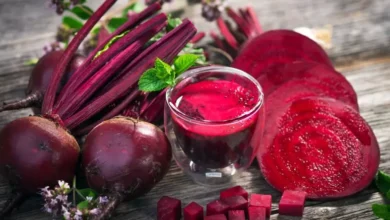How to Read Nutrition Labels Like a Pro
Standing in the grocery store aisle, trying to figure out if a food is “healthy” or not can feel overwhelming. With so many claims like low-fat, sugar-free, or all-natural, it’s easy to get confused.
That’s where nutrition labels come in—they’re your secret weapon to making informed food choices. When you understand how to read them, you can spot hidden sugars, compare products, and choose foods that truly support your health goals.
Let’s break it down so you can read any nutrition label like a pro.
Why Nutrition Labels Matter
Nutrition labels give you the facts—no marketing, no hype. They show:
- What’s really in your food
- How much sugar, fat, fiber, and protein it contains
- The number of calories per serving
- The ingredients used
When you can interpret this info, you’re empowered to make smarter, healthier choices.
1. Start With the Serving Size
At the very top, you’ll see the serving size and the number of servings per container.
This is crucial! The nutrition info listed below is based on one serving, not the entire package. If you eat double the serving, you’re getting double the calories, fat, sugar, etc.
Example: If a bag of chips says 150 calories per serving, but you eat 3 servings, that’s 450 calories.
2. Check the Calories
Calories give you a measure of how much energy the food provides.
It’s not just about the number of calories—it’s about where those calories come from. A 200-calorie snack of nuts and fruit offers far more nutrition than 200 calories from candy or soda.
Use calorie info as a reference point, not the only decision factor.
3. Look at the Macronutrients
These include:
- Total Fat (including saturated and trans fats)
- Carbohydrates (including fiber and sugars)
- Protein
Fats:
- Aim for foods low in trans fats and saturated fats
- Focus on foods with healthy fats like nuts, seeds, avocados, and olive oil
Carbohydrates:
- Look for high fiber (at least 3g per serving is good)
- Watch for added sugars—more on that next
Protein:
- Try to include protein in every meal or snack—it keeps you full and supports muscle health
4. Watch Out for Added Sugars
Total Sugars include both natural (like those in fruit and milk) and added sugars. The label will now list Added Sugars separately.
Aim for:
- Less than 10% of your daily calories from added sugar
- Products with 5g or less of added sugar per serving
- Foods with natural sugars + fiber, like fruit, are still great choices
Red flag: A “healthy” granola bar with 15g of added sugar is basically a dessert.
5. Check the Fiber
Fiber is essential for digestion, blood sugar control, and fullness.
- Look for 3g or more per serving
- The more processed a food is, the less fiber it likely contains
Whole grains, fruits, vegetables, legumes, and seeds are your best sources.
6. Sodium: Less Is More
Too much salt is linked to high blood pressure and heart issues.
- Aim for less than 2,300mg of sodium per day
- A “low sodium” product has 140mg or less per serving
- Watch for sodium in sauces, soups, frozen meals, and snacks
7. Pay Attention to the % Daily Value (%DV)
The % Daily Value helps you understand how much a nutrient in one serving contributes to your daily needs.
- 5% or less is considered low
- 20% or more is considered high
Use this to:
- Choose high in fiber, calcium, potassium, and iron
- Choose low in saturated fat, sodium, and added sugar
8. Read the Ingredient List
Ingredients are listed in descending order by weight—so the first few are what the food contains most.
Tips:
- Shorter ingredient lists usually mean less processed
- Look for whole food ingredients (e.g., oats, nuts, fruit)
- Avoid products with lots of unpronounceable additives or sugar listed under different names (e.g., cane juice, corn syrup, dextrose)
If sugar or refined grains are one of the first three ingredients, it’s probably not the healthiest choice.
9. Don’t Be Fooled by Health Claims
Ignore the front of the package—it’s marketing.
Claims like:
- “Low-fat”
- “Sugar-free”
- “All-natural”
- “Keto” or “Paleo-friendly”
…don’t guarantee that a product is actually healthy. Always flip to the back and read the nutrition label.
10. Compare Products Side by Side
When you’re choosing between two similar foods (like breads or cereals), use the label to compare:
- Fiber
- Added sugar
- Sodium
- Protein
- Ingredients
Choose the one with more nutrients and fewer additives.
Final Thoughts: Labels Are Your Ally
Learning to read nutrition labels gives you the power to choose what’s right for your body—not just what’s trending.
It’s not about perfection—it’s about making informed choices that help you feel your best. With a little practice, you’ll be label-savvy in no time.
Next time you’re shopping, grab a product, flip it over, and see what’s really inside. Your health is worth that extra look.

Hello! My name is Alan Teixeira and I am passionate about helping people live healthier, more balanced lives. From mindful eating to daily habits that promote physical and mental well-being, I believe that small, consistent changes can lead to powerful transformations.
I created this blog to share practical tips, reliable information, and thoughtful insights that can inspire you to take better care of yourself—with balance, mindfulness, and positivity.
If you are looking to improve your health, nourish your body, and build a lighter, more fulfilling routine, you are in the right place. Welcome!





